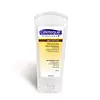What's inside
What's inside
 Key Ingredients
Key Ingredients

 Benefits
Benefits

 Concerns
Concerns

 Ingredients Side-by-side
Ingredients Side-by-side

Water
Skin ConditioningC12-15 Alkyl Benzoate
AntimicrobialZinc Oxide
Cosmetic ColorantMethylene Bis-Benzotriazolyl Tetramethylbutylphenol
UV FilterCetyl Alcohol
EmollientSodium Acrylate/Sodium Acryloyldimethyl Taurate Copolymer
Emulsion StabilisingGlyceryl Stearate
EmollientCaprylic/Capric Triglyceride
MaskingPropylene Glycol
HumectantCyclomethicone
EmollientSodium Lactate
BufferingSodium Gluconate
Skin ConditioningLauryl Laurate
Skin ConditioningIsodecyl Neopentanoate
EmollientDiisopropyl Sebacate
EmollientLauryl Lactate
EmollientPolyamide-5
Skin ConditioningPrunus Amygdalus Dulcis Oil
Skin ConditioningTriethoxycaprylylsilane
Lactic Acid
BufferingDecyl Glucoside
CleansingXanthan Gum
EmulsifyingDiazolidinyl Urea
PreservativePolyhydroxystearic Acid
EmulsifyingTetrasodium EDTA
Methylparaben
PreservativePropylparaben
PreservativeWater, C12-15 Alkyl Benzoate, Zinc Oxide, Methylene Bis-Benzotriazolyl Tetramethylbutylphenol, Cetyl Alcohol, Sodium Acrylate/Sodium Acryloyldimethyl Taurate Copolymer, Glyceryl Stearate, Caprylic/Capric Triglyceride, Propylene Glycol, Cyclomethicone, Sodium Lactate, Sodium Gluconate, Lauryl Laurate, Isodecyl Neopentanoate, Diisopropyl Sebacate, Lauryl Lactate, Polyamide-5, Prunus Amygdalus Dulcis Oil, Triethoxycaprylylsilane, Lactic Acid, Decyl Glucoside, Xanthan Gum, Diazolidinyl Urea, Polyhydroxystearic Acid, Tetrasodium EDTA, Methylparaben, Propylparaben
Water
Skin ConditioningEthylhexyl Methoxycinnamate
UV AbsorberEthylhexyl Salicylate
UV AbsorberGlycerin
HumectantOctocrylene
UV AbsorberCyclopentasiloxane
EmollientButyl Methoxydibenzoylmethane
UV AbsorberGlyceryl Stearate
EmollientPEG-100 Stearate
Steareth-2
EmulsifyingDimethicone
EmollientC12-15 Alkyl Lactate
EmollientCetearyl Dimethicone Crosspolymer
CI 77891
Cosmetic ColorantSteareth-21
CleansingAluminum Starch Octenylsuccinate
AbsorbentMethylene Bis-Benzotriazolyl Tetramethylbutylphenol
UV FilterDiisopropyl Adipate
EmollientBenzylidene Dimethoxydimethylindanone
Skin ProtectingPhenoxyethanol
PreservativeTriethanolamine
BufferingButylene Glycol
HumectantCamellia Sinensis Leaf Extract
AntimicrobialAcrylates/C10-30 Alkyl Acrylate Crosspolymer
Emulsion StabilisingTocopheryl Acetate
AntioxidantFarnesol
PerfumingMethylparaben
PreservativeTetrasodium EDTA
Butylparaben
MaskingEthylparaben
PreservativePropylparaben
PreservativeBHT
AntioxidantLinalool
PerfumingWater, Ethylhexyl Methoxycinnamate, Ethylhexyl Salicylate, Glycerin, Octocrylene, Cyclopentasiloxane, Butyl Methoxydibenzoylmethane, Glyceryl Stearate, PEG-100 Stearate, Steareth-2, Dimethicone, C12-15 Alkyl Lactate, Cetearyl Dimethicone Crosspolymer, CI 77891, Steareth-21, Aluminum Starch Octenylsuccinate, Methylene Bis-Benzotriazolyl Tetramethylbutylphenol, Diisopropyl Adipate, Benzylidene Dimethoxydimethylindanone, Phenoxyethanol, Triethanolamine, Butylene Glycol, Camellia Sinensis Leaf Extract, Acrylates/C10-30 Alkyl Acrylate Crosspolymer, Tocopheryl Acetate, Farnesol, Methylparaben, Tetrasodium EDTA, Butylparaben, Ethylparaben, Propylparaben, BHT, Linalool
Ingredients Explained
These ingredients are found in both products.
Ingredients higher up in an ingredient list are typically present in a larger amount.
Glyceryl Stearate is a mix of glycerin and stearic acid.
It is used to stabilize the mixing of water and oil ingredients. By preventing these ingredients from separating, it can help elongate shelf life. It can also help thicken the product's texture.
As an emollient, it helps soften skin and supports barrier-replenishing ingredients.
In cosmetics, Glyceryl Stearate is often made from vegetable oils or synthetically produced.
This ingredient may not be fungal-acne safe
Fun fact: The human body also creates Glyceryl Stearate naturally.
Learn more about Glyceryl StearateMethylene Bis-Benzotriazolyl Tetramethylbutylphenol (Tinosorb M) is a hybrid and broad-spectrum UV ingredient. It is both a UV absorber and filter.
UV absorbers are an agent that absorbs UV rays. They protect your skin by using chemical reactions to convert UV rays into heat and energy. UV filters physically reduce the amount of UV rays from reaching your skin.
Tinosorb M covers a range of 280-400 nm and is photostable. This ingredient is neither oil or water soluble.
Tinosorb M is not available in the US. However, it is available in the EU and Asia.
It's sister, Tinosorb S, is set to be approved in the US by late 2025 (fingers crossed!).
Learn more about Methylene Bis-Benzotriazolyl TetramethylbutylphenolMethylparaben is a preservative and is a paraben. It is used to prevent the growth of fungus, mold, and other harmful bacteria. Parabens are chemicals used as preservatives in both cosmetics and food.
Methylparaben can be synthetically created. It can also be found naturally in some fruits, such as blueberries.
Oftentimes, Methylparaben is combined with other parabens to help increase the shelf life.
The safety of Methylparaben is currently being studied. While ongoing studies are looking into the safety of parabens, the results have been very mixed. Some studies have not found Methylparaben to be harmful.
Learn more about MethylparabenPropylparaben is a preservative and is a paraben with antifungal and antimicrobial properties.
This ingredient can be naturally found in plants and insects, but most of it is synthetically manufactured for human use. In cosmetics, it is usually created by reacting para-aminobenzoic acid and propanol (an alcohol).
You can usually find this ingredient in water-based products.
Parabens have come under controversy due to the claim they are hormone disruptors. Studies show conflicting results. We recommend speaking with a professional if you have any concerns.
Propylparaben is commonly found in food, medicine, and cosmetics.
Learn more about PropylparabenTetrasodium EDTA is the salt formed from neutralizing ethylenediamine tetraacetic acid with sodium hydroxide. It is a chelating agent and used to prevent metal ions from binding to other ingredients. This helps keep the product and ingredients stable.
Tetrasodium EDTA comes as a white solid and is soluble in water.
Water. It's the most common cosmetic ingredient of all. You'll usually see it at the top of ingredient lists, meaning that it makes up the largest part of the product.
So why is it so popular? Water most often acts as a solvent - this means that it helps dissolve other ingredients into the formulation.
You'll also recognize water as that liquid we all need to stay alive. If you see this, drink a glass of water. Stay hydrated!
Learn more about Water